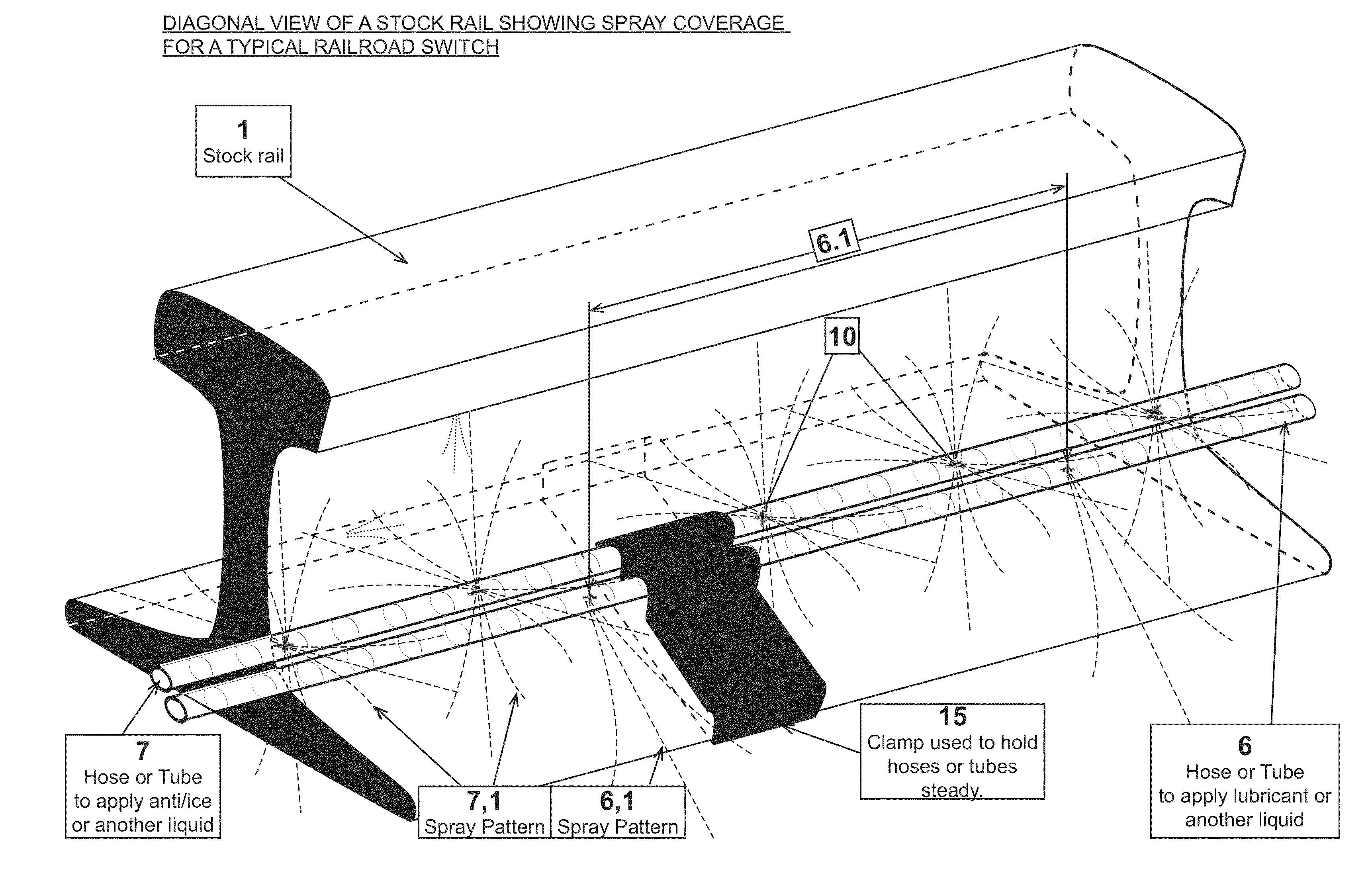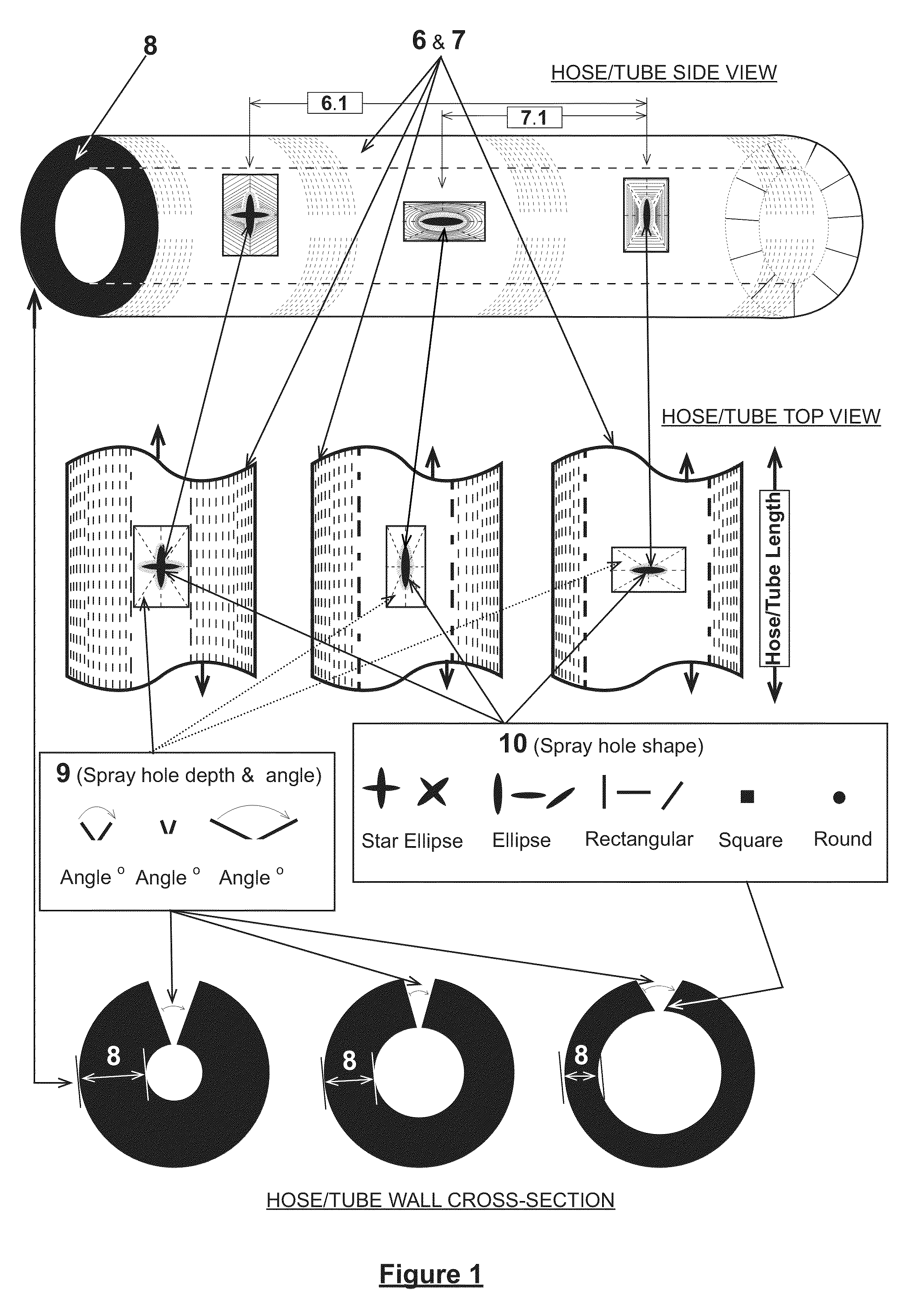Perforated fluid dispensing hose or tube for the purpose of applying liquids and/or gases to railroad tracks including railroad switches, railroad crossings, bridge overheads and tunnel walls
a technology of fluid dispensing hoses and hoses, which is applied in the direction of rail wetting/lubrication, rail lubrication, rails, etc., can solve the problems of railroad switch failure and service delays, manual lubrication or anti-ice agent treatment is both costly and time-consuming for maintenance crews of railroad companies, and achieves uniform and accurate fluid dispensing
- Summary
- Abstract
- Description
- Claims
- Application Information
AI Technical Summary
Benefits of technology
Problems solved by technology
Method used
Image
Examples
Embodiment Construction
[0024]For the purpose of promoting an understanding of the principles of the invention and presenting its currently understood “best practice” of operation, the following references will be made to the embodiments illustrated in the drawings. It will nevertheless, be understood that no limitation of the scope or the design of the invention is thereby intended, with such alterations and further applications of the principles of the invention illustrated therein being contemplated as would normally occur to one skilled in the art to which the invention relates.
[0025]The present invention is designed to provide an effective way to apply a lubricant, anti-ice agent, deicing agent or gas to railroad switches, crossings (frogs) and other areas. Present methods generally require manual applications at a certain frequency (once a week or month or longer, prior, during after a snow storm). This is labor intensive and leads to irregular maintenance of switches and crossings especially in remo...
PUM
| Property | Measurement | Unit |
|---|---|---|
| length | aaaaa | aaaaa |
| length | aaaaa | aaaaa |
| pressures | aaaaa | aaaaa |
Abstract
Description
Claims
Application Information
 Login to View More
Login to View More - R&D
- Intellectual Property
- Life Sciences
- Materials
- Tech Scout
- Unparalleled Data Quality
- Higher Quality Content
- 60% Fewer Hallucinations
Browse by: Latest US Patents, China's latest patents, Technical Efficacy Thesaurus, Application Domain, Technology Topic, Popular Technical Reports.
© 2025 PatSnap. All rights reserved.Legal|Privacy policy|Modern Slavery Act Transparency Statement|Sitemap|About US| Contact US: help@patsnap.com



